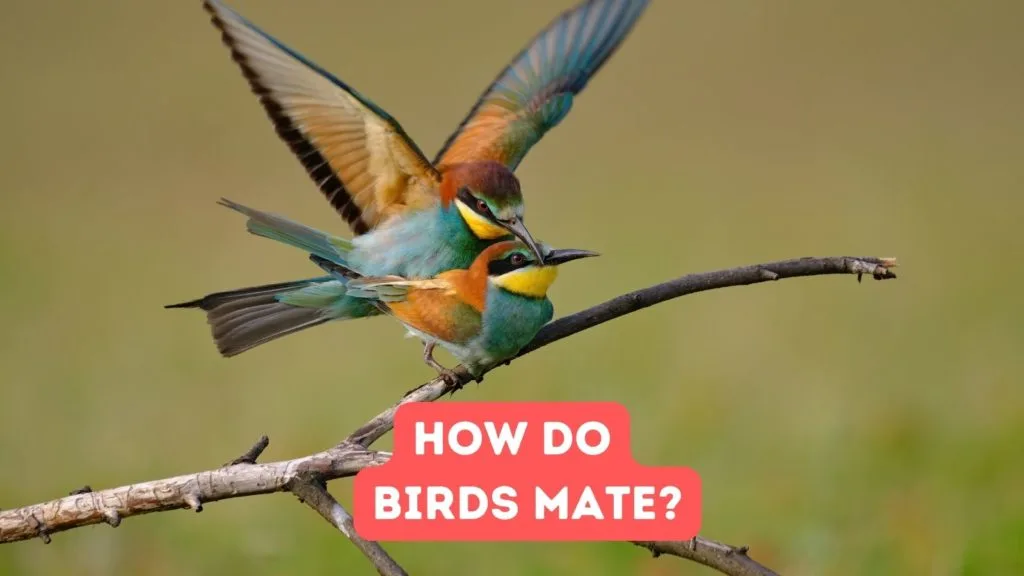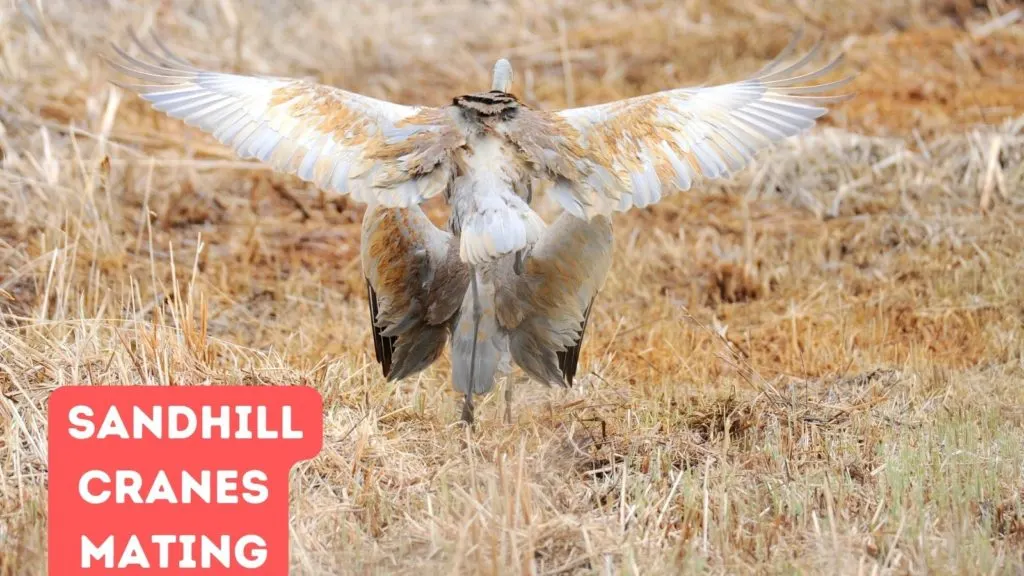From aerial acrobatics to monogamous pairings that last a lifetime, the bird world is full of fascinating examples of how nature ensures the continuation of its many species. Backyard birders are often witness to many of stages of a bird’s life including some of the unique behaviors during this important phase of their life. In this blog post, let’s look at the intricacies of bird mating, including the variations among species, the timing of mating, and some of the behaviors you might witness.

The Basics of Bird Mating
At its core, bird mating involves the transfer of sperm from the male to the female to fertilize eggs. This is often preceded by complex courtship rituals, which can vary significantly from one species to another.
The anatomy of birds, particularly in relation to reproduction, is fascinating and varies significantly across species. Most male birds do not have a penis.
Instead, both male and female birds of most species have a cloaca, which is an internal chamber that serves multiple purposes, including digestion, excretion, and reproduction. During the mating process, known as “cloacal kissing,” the male and female birds will align their cloacas for the transfer of sperm from the male to the female.
However, there are exceptions to this general rule. A few bird species do have a penis, most notably among the waterfowl family, which includes ducks, geese, and swans. The presence of a penis in these species is thought to be related to their mating systems, which often involve aquatic environments where sperm transfer might be more challenging due to water currents. The penis helps ensure that the sperm are successfully transferred to the female during mating.
The structure of the avian penis is quite different from that of mammals. In species that have one, the avian penis is typically a relatively simple organ to deliver sperm. This organ is not erectile in the same way mammalian penises are; instead, it fills with lymph fluid to extend. After mating, it retracts back into the cloaca.
While the actual act of mating is relatively brief, the lead-up to it can be elaborate, involving dances, displays of plumage, or the construction of intricate nests.
Do Different Types of Birds Mate Differently?
Absolutely. Bird mating strategies and behaviors can vary widely among species:
Aerial Mating: Some birds, like certain species of hawks and eagles, engage in dramatic aerial displays as part of their mating rituals. This can include locking talons and free-falling in a spiral before separating at the last moment. (Talk about trust in your mate!)
Monogamy vs. Polygamy: Many bird species form monogamous pair bonds that last for a season, several seasons, or even life. Others may be polygamous, with one male mating with multiple females or vice versa. For example, swans and albatrosses are known for forming long-term monogamous relationships.
Lekking: Some species, such as the sage grouse, participate in a behavior known as lekking, where males gather in a specific area (a lek) and perform for females, who then select a mate based on the display. Think of it as The Bachelorette with feathers…
Mating Rituals and Courtship Displays

Before mating, birds often engage in elaborate rituals designed to attract and choose suitable partners:
- Visual Displays: Many species, like peacocks and birds-of-paradise, rely on stunning visual displays of feathers.
- Vocalizations: Songs and calls can be critical for attracting a mate, as seen in many songbird species.
- Dances and Aerial Displays: Cranes, for example, perform intricate dances, while some raptor species showcase their strength and agility in the air.
When Do Birds Mate?
- Breeding Season: The timing of mating is usually tied to the breeding season, which can vary by geography, climate, and species. Birds mate to ensure that the conditions are optimal for raising their young, often when food sources are abundant.
- Day vs. Night: Most birds mate during the day, but there are exceptions. For instance, nocturnal birds like owls may mate at night.
Nesting and Rearing Young
The post-mating period involves nest building, egg-laying, and rearing of the young. Nesting behaviors can also vary widely, from simple ground nests to elaborate structures in trees, cliffs, or even man-made buildings.
The mating behaviors of birds are as varied as the species themselves, encompassing a wide range of rituals, strategies, and timings. These behaviors are not just fascinating examples of nature’s diversity; they’re also critical for the survival of bird species–and they highlight the importance of conservation efforts to protect these remarkable creatures and their habitats.
More Posts You Might Like
How to Keep Mice Out of Bird Seed
7 Bird Feeding Myths Debunked: Separating Fact from Fiction
- 8 Letter Bird Names - August 14, 2024
- 7 Letter Bird Names - August 14, 2024
- 7 Birds Named After Famous People - July 23, 2024
